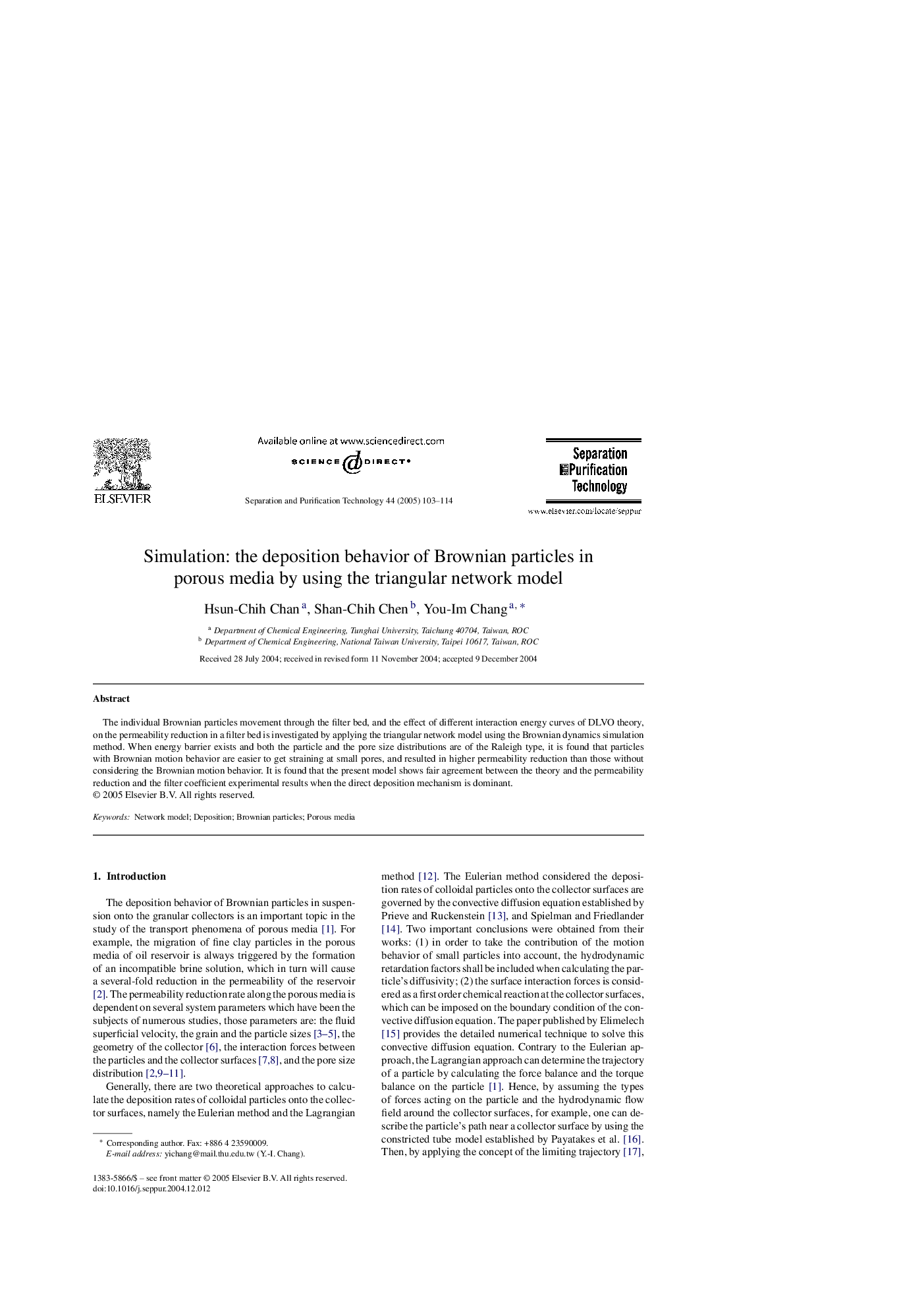| Article ID | Journal | Published Year | Pages | File Type |
|---|---|---|---|---|
| 10389853 | Separation and Purification Technology | 2005 | 12 Pages |
Abstract
The individual Brownian particles movement through the filter bed, and the effect of different interaction energy curves of DLVO theory, on the permeability reduction in a filter bed is investigated by applying the triangular network model using the Brownian dynamics simulation method. When energy barrier exists and both the particle and the pore size distributions are of the Raleigh type, it is found that particles with Brownian motion behavior are easier to get straining at small pores, and resulted in higher permeability reduction than those without considering the Brownian motion behavior. It is found that the present model shows fair agreement between the theory and the permeability reduction and the filter coefficient experimental results when the direct deposition mechanism is dominant.
Related Topics
Physical Sciences and Engineering
Chemical Engineering
Filtration and Separation
Authors
Hsun-Chih Chan, Shan-Chih Chen, You-Im Chang,
